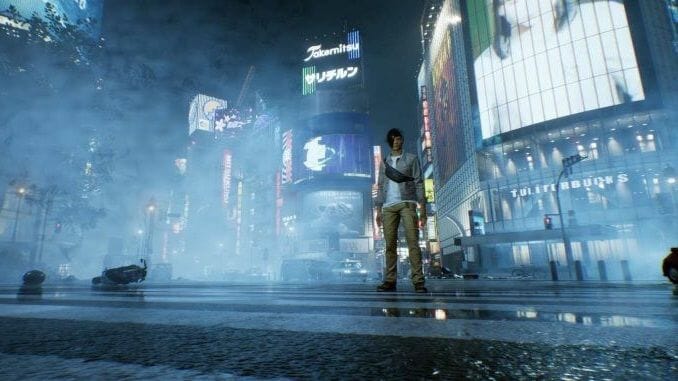Ghostwire: Tokyo Feels Like Two Separate Games Forced to Coexist

About five to six hours into Ghostwire: Tokyo a new mechanic is introduced where an enemy gets a hold of the protagonist, Akito, and rips the presiding spirit, KK, out of his body. Where once Akito had magical powers to fight spirits and ghostlike abilities to glide over the rooftops of Tokyo he is now returned to mundanity. Akito is now powerless, without any of the magic that has allowed him to traverse the combat throughout the game. In these moments, I wonder what it would be like to rip the passionate spirit of Ghostwire: Tokyo out of its cliched vessel.
Ghostwire: Tokyo follows Akito who is possessed by a ghost after a car crash and left as the last person alive after a fog wipes out the population of Tokyo, Japan. The spirit which has inhabited Akito, KK, struggles to come to terms with the new roommate situation inside of the same body. For a while he has been chasing after the Hannya group that are attempting to use the spirits of the world to cross realities.
Akito… well Akito doesn’t really have much going on beyond his sister being taken by the Hannya group. He actually is one of the weakest parts of the games’ narrative, as many times he feels like a vessel for KK’s pursuit of the Hannya group without much more than crying out his sister’s name.
However, Akito’s vessel holding KK feels representative of Ghostwire: Tokyo as a game itself. It is a game that is split in its desires. On the outside, it’s a conservative big budget videogame release. However, just like Akito is the shallow vessel for KK, so too are these systems for a genuine, creative heart inside of Ghostwire.
The main loop of Ghostwire: Tokyo’s gameplay involves story missions where the protagonist tries to figure out how to save his sister. Enemies will appear which will lead to a fairly flat combat sequence. Then some torii gates need clearing in order to open up the map fog and then get into the next story beat. All the while pop ups cover the screen telling you how many skill tree points you have gained, or continuously interrupting the gameplay to tutorialize you, even 10 hours in, about the same topics.
I could go into any of these aspects more deeply, but to be honest there just isn’t that much nuance to the explicit structures of Ghostwire beyond open world design norms we have seen driven into the ground over the past five years. And to focus on these would be doing a disservice to my experience of the game because what is beautiful about Ghostwire isn’t the explicit structures, but all of the creative passion underlying them.
In between the missions and action, Ghostwire is a game about running through streets and jumping across rooftops. As Akito inspects alleyways, the radio from the local laundromat is still playing crackly folk music. A cat is wandering around looking for attention. You wander through the stairwells, sidewalks, and hallways of the city’s old residents, but you also stumble into the awkward ways that the city’s buildings push up against each other. This isn’t a romanticized idea of Tokyo, but a passionate image of the awkwardness and beauty of Tokyo.
The world is thoughtfully constructed, not by iconography, but clearly put together by a team who has lived in the spaces that have been designed. It’s as Alan Wen notes in his recent essay on the game, that unlike other titles developed by Western developers, Ghostwire: Tokyo is developed by a team who has roots in Japanese society and its beliefs. It was also the first game directed by Ikumi Nakamura, who was the creative director at Tango Ghostworks until having to leave the studio due to workplace health issues, who has noted her passion for urban exploration.
-

-

-

-

-

-

-

-

-

-

-

-

-

-

-

-

-

-

-

-

-

-

-

-

-

-

-

-

-

-

-

-

-

-

-

-

-

-

-

-








































